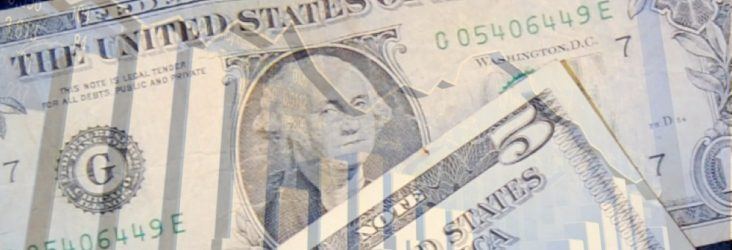U.S. GDP slows to 2.3% on weak consumer spending, fewer housing purchases as interest rates spike
by April 27, 2018 10:07 am 322 views

The nation’s economy fell in the first quarter of 2018 as weak consumer spending and fewer housing purchases pushed real gross domestic product (GDP) growth to the lowest level in 12 months, according to the “advance” estimate released Wednesday (Nov. 29) by the Bureau of Economic Analysis (BEA).
Still, the nation’s gross domestic product, the value of goods and services produced by the nation’s economy less the value of the goods and services used up in production, beat expectations. A consensus of Wall Street economists had forecasted first quarter GDP growth of only 2%, according to a survey conducted by Bloomberg.
The BEA’s “advance” estimate, based on source data that are incomplete or subject to further revision by the Department of Commerce research and analysis group, is released near the end of the first month following the end of the quarter. As more detailed and more comprehensive data becomes available, “second” and “third” estimates are released near the end of the second and third months, respectively.
The first reading of the U.S. economy in 2018 follows Tuesday’s report by the Conference Board that U.S. consumer confidence was up slightly in April with most Americans feeling modestly positive about the economy. The closely-watched Index now stands at 128.7 up from 127 in March.
“Consumer confidence increased moderately in April after a decline in March,” said Lynn Franco, Director of Economic Indicators at The Conference Board. “Consumers’ assessment of current conditions improved somewhat, with consumers rating both business and labor market conditions quite favorably. Overall, confidence levels remain strong and suggest that the economy will continue expanding at a solid pace in the months ahead.”
The U.S. GDP growth rate for the first quarter is weakest expansion of the U.S. economy since the first quarter of 2017, when annualized GDP growth was only 1.2%. Earlier in February, 36 forecasters surveyed by the Federal Reserve Bank of Philadelphia had predicted real GDP will grow at an annual rate of 3% in this quarter and 2.9% in the second quarter.
On Thursday, however, the Atlanta Fed’s GDPNow final forecast for the first quarter advance estimate was tempered at only 2%. The nation’s economic picture grew cloudier at the end of 2017 when real GDP increased at a revised annual rate of 2.9%, closing out the first year of President Donald Trump’s administration with modest annual growth of 2.3%, compared to tepid 1.85% expansion in 2016.
Still, some economists shrugged off the first look at the U.S. economy for 2018, noting the strong pick-up up in business investment that may be benefiting from lower capital costs due to the corporate tax relief legislation passed by Congress in late 2017.
The Conference Board also predicted that although consumer spending growth slowed in the first quarter, individual tax cuts should boost consumer spending later in the year as wages improve. However, residential investment was flat during the first quarter as higher interest rates may prove a barrier even though demand for new homes remains strong.
“As treasury rates move north of three percent, mortgage rates will also rise, dissuading potential home buyers,” said the independent global business and economic research group said in a research note. “The Federal Reserve has reacted to upward inflationary pressure so far by moving closer to three rather than two rate increases during the rest of 2018. Today’s number should push the bank towards this more aggressive rate tightening path.”
Overall, current-dollar GDP increased 4.3%, or $211.2 billion in the first quarter to a level of nearly $20 trillion. That compares to current-dollar GDP improvement of 5.3%, or $253.5 billion in the fourth quarter of 2017.
The price index for gross domestic purchases increased 2.8% in the first quarter, compared to 2.5% in the previous quarter. The PCE price index rose 2.7%, the same as the fourth quarter. Excluding food and energy prices, the price index increased 2.5%, compared to 1.9% in the prior three months.
Current-dollar personal income increased $182.1 billion in the first quarter, down from $186.4 billion in the fourth quarter. Decelerations in personal interest income, rental income and nonfarm proprietors’ income were largely offset by accelerations in wages and salaries and government social benefits.
Disposable personal income rose 6.2% to $222.1 billion, compared with an increase of $136.3 billion, or 3.8%, in the fourth quarter. Real disposable personal income climbed 3.4%, compared with only 1.1% in the previous quarter. Personal saving grew to $462.1 billion in the first quarter, compared with $379.8 billion in the fourth quarter. Personal current taxes decreased $40.1 billion in the first quarter, compared to $50.1 in the fourth quarter.
The BEA will release its “second” GDP estimate for the first quarter on May 30. The Atlanta Fed’s GDPNow model forecasted second quarter real GDP growth at 3.4%.
